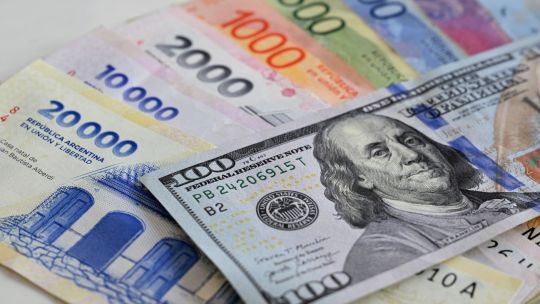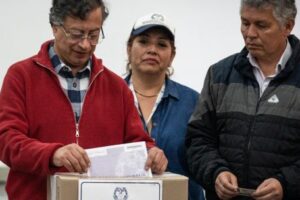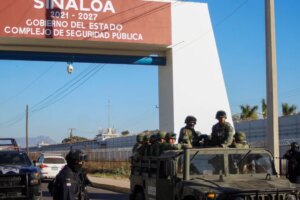
Argentina’s peso opened lower Friday, even after US Treasury Secretary Scott Bessent announced that the US bought the currency Thursday on the parallel exchange rate known among investors as the “blue chip swap.”
Bessent’s post on X Friday marks the first time he’s disclosed such a currency intervention. The US Treasury also bought pesos at the official exchange rate in Argentina’s local market, adding to previous purchases.
The comments failed to prevent the peso weakening as much as 3.4 percent Friday on the official market and about one percent in blue chip swaps. Dollar bonds, meanwhile, reversed an earlier jump. Notes maturing in 2035 are down by more than half a cent on the dollar, trading just below 57 cents, according to indicative pricing data compiled by Bloomberg.
Bessent’s moves are aimed at meeting persistent dollar demand from savers and investors ahead of a crucial midterm election that President Javier Milei’s party faces next weekend, and after a landslide loss in a September local election. Many Argentines are convinced that even a flood of US cash won’t halt another painful devaluation. The US Treasury secretary has tried to counter that view by stepping in to buy the peso, calling it “undervalued.”
While the official rate is obtained at banks, Argentines use a series of unofficial rates – some legal and others not – for financial and cash transactions, respectively. The official rate was at about 1,443 pesos to the dollar at midday on Friday, while the blue-chip swap was at 1,495 per dollar. Locals increasingly rely on the parallel rates when the peso is under currency controls or perceived to be overvalued.
The US Treasury “goes where it’s needed. And if you want to be optimistic, it shows the strength of the US commitment to Argentina,” said Walter Stoeppelwerth, chief investment officer at local brokerage Grit Capital Group. “The economic team insists that the market underestimates the level of commitment.”
Meanwhile, short term interest rates continued to fall, with the overnight collateralised peso repo rate – known locally as caucion – dropping to around 50 percent on Friday from more than 100 percent in the previous session. Borrowing costs are down for a second day after the government failed to roll over more than half of the local currency debt coming due this week, pushing a fresh supply of pesos into the market.
Confidence in US backing was dented earlier this week when US President Donald Trump, in a meeting with Milei in Washington, signalled he would withdraw support if the Argentine leader’s party loses the vote. Argentine officials have argued Trump was talking about Milei’s re-election bid in 2027 and not this month’s midterms.
Bessent previously announced that the US is preparing to extend a US$20-billion swap line to Argentina, although details remain scarce. Separately, the US Treasury is working on a US$20-billion facility from the private sector that would complement the currency swap.
As part of the effort to prop up the currency, Citigroup Inc sold pesos to the Federal Reserve on Thursday, according to people familiar with the matter. Banco Santander SA has continued to buy pesos in Argentina’s local market on behalf of the Treasury, another person with direct knowledge of the matter said. It wasn’t clear how much was bought or sold by either institution to date.
“In recent days, intervention has not been enough to prevent a rise in both the official and parallel exchange rates,” said Juan Sola, an economist at Banctrust. “Next week, we’ll likely see increased pressure, with the official dollar approaching the band’s ceiling, unless the Treasury increases its intervention.”
by Patrick Gillespie & Nicolle Yapur, Bloomberg





